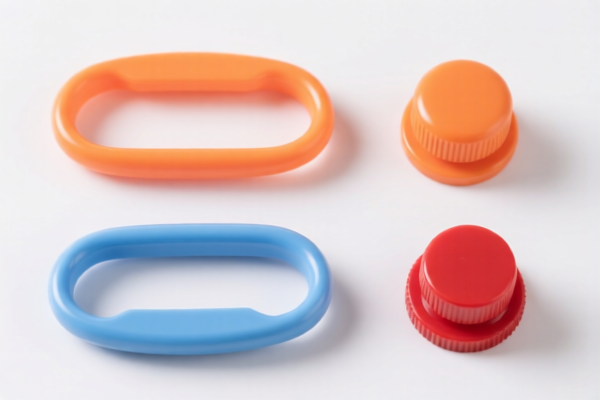| HS Code | Official Doc | Tariff Rate | Origin | Destination | Effective Date |
|---|---|---|---|---|---|
| 7318152030 | Doc | 80.0% | CN | US | 2025-05-12 |
| 8308909000 | Doc | 57.7% | CN | US | 2025-05-12 |
| 7415290000 | Doc | 58.0% | CN | US | 2025-05-12 |
| 8205595560 | Doc | 60.3% | CN | US | 2025-05-12 |
| 8205700090 | Doc | 60.0% | CN | US | 2025-05-12 |




Okay, let's break down the HS codes and tax implications for your declared items, focusing on "DECK CLIP". I'll provide a structured analysis to help you understand the classification and potential costs.
Understanding HS Codes: A Quick Primer
HS codes (Harmonized System codes) are internationally standardized codes used to classify traded products. The first 6 digits are generally consistent worldwide, while additional digits are used for more specific categorization at the country level. Here's a general breakdown of what the digits mean:
- Chapter (First 2 digits): Broad category of the product (e.g., 73 for iron or steel articles).
- Heading (Next 2 digits): More specific grouping within the chapter (e.g., 7318 for screws, bolts, nuts, etc.).
- Subheading (Next 2 digits): Further refinement of the product (e.g., 7318.15 for threaded articles).
- Additional Digits: Country-specific codes for even greater detail.
Analysis of Your Declared Items
Here's a breakdown of each HS code, its meaning, and tax implications. I'll also highlight potential considerations for "DECK CLIP" classification.
1. 7318.15.20.30: Structural Bolts (Total Tax: 80.0%)
- Chapter 73: Iron or steel articles.
- Heading 7318: Screws, bolts, nuts, etc.
- Subheading 7318.15: Threaded articles, other screws and bolts.
- Further Detail: Bolts and bolts with nuts/washers entered together, shank diameter >= 6mm.
- Tax:
- Basic Duty: 0.0%
- Additional Tariff: 25.0%
- Post-April 2, 2025: Additional Tariff increases to 30% for steel/aluminum products.
- Consideration for Deck Clips: If your deck clips are essentially structural bolts (designed for load-bearing connections), this code could be appropriate. However, you need to confirm the shank diameter is >= 6mm.
2. 8308.90.90.00: Other Clasps, Frames, Buckles (Total Tax: 57.7%)
- Chapter 83: Base metal mountings, fittings, etc.
- Heading 8308: Clasps, frames, buckles, etc. for clothing, footwear, etc.
- Subheading 8308.90: Other (including parts).
- Tax:
- Basic Duty: 2.7%
- Additional Tariff: 25.0%
- Post-April 2, 2025: Additional Tariff increases to 30%.
- Consideration for Deck Clips: If your deck clips are primarily used for fastening or connecting materials without significant structural load-bearing, and are more akin to buckles or clasps, this code might be suitable.
3. 7415.29.00.00: Other Copper/Iron/Steel Articles, Not Threaded (Total Tax: 58.0%)
- Chapter 74: Copper and articles thereof.
- Heading 7415: Nails, tacks, staples, etc.
- Subheading 7415.29: Other articles, not threaded.
- Tax:
- Basic Duty: 3.0%
- Additional Tariff: 25.0%
- Post-April 2, 2025: Additional Tariff increases to 30%.
- Consideration for Deck Clips: If your deck clips are not threaded and are made of copper, iron, or steel, this code could apply.
4. 8205.59.55.60: Other Handtools (Iron/Steel) (Total Tax: 60.3%)
- Chapter 82: Handtools.
- Heading 8205: Handtools (not elsewhere specified).
- Subheading 8205.59: Other handtools (including parts).
- Tax:
- Basic Duty: 5.3%
- Additional Tariff: 25.0%
- Post-April 2, 2025: Additional Tariff increases to 30%.
- Consideration for Deck Clips: If your deck clips are designed to be used as a tool for installing decking boards, this code might be relevant.
5. 8205.70.00.90: Vises, Clamps, and Parts (Total Tax: 60.0%)
- Chapter 82: Handtools.
- Heading 8205: Handtools (not elsewhere specified).
- Subheading 8205.70: Vises, clamps, and parts.
- Tax:
- Basic Duty: 5.0%
- Additional Tariff: 25.0%
- Post-April 2, 2025: Additional Tariff increases to 30%.
- Consideration for Deck Clips: If your deck clips function as clamps to hold decking boards in place during installation, this code could be appropriate.
Recommendations & Next Steps
- Material Confirmation: What is the primary material of your deck clips (steel, copper, etc.)?
- Threaded or Non-Threaded? Are the clips threaded for screwing in, or do they use a different fastening mechanism?
- Functionality: What is the primary function of the clip? Is it structural support, fastening, clamping, or a tool for installation?
- Shank Diameter: If threaded, measure the shank diameter.
- Detailed Product Description: Provide a very detailed description of the clip, including dimensions, material, and how it's used.
- Consider a Binding Ruling: For certainty, you can request a binding ruling from your local customs authority. This provides a legally binding classification for your specific product.
Important Note: The additional tariffs (25% and potentially 30% post-April 2, 2025) are subject to change based on trade agreements and government policies. Always verify the latest tariff rates with your customs broker or local customs authority.
Disclaimer: I am an AI chatbot and cannot provide definitive customs classification advice. This information is for general guidance only. You should consult with a qualified customs broker or local customs authority for accurate classification and compliance information.
Customer Reviews
I was specifically looking for tariff rates for exporting to the US and the table with the CN → US codes was perfect. The link to the official documentation for 8205.59.55.60 was a nice touch! Definitely a good place to start your HS code research.
The information is pretty good overall, but it's a lot to sift through. It felt a little overwhelming trying to decide which code was *most* accurate for my deck clips, and the 'consideration' sections were a bit vague. More specific examples would be helpful.
Excellent resource for researching DECK CLIP classifications! The detailed explanation of each HS code, including the chapters and subheadings, made it much easier to narrow down the correct code for my product. 8308.90.90.00 looks like a good starting point.
I found the HS Code 7318152030 really helpful for understanding the tariff rate on structural bolts. The breakdown of the basic duty and additional tariff was clear, especially the note about the increase after April 2025. I still need to double-check the shank diameter though!